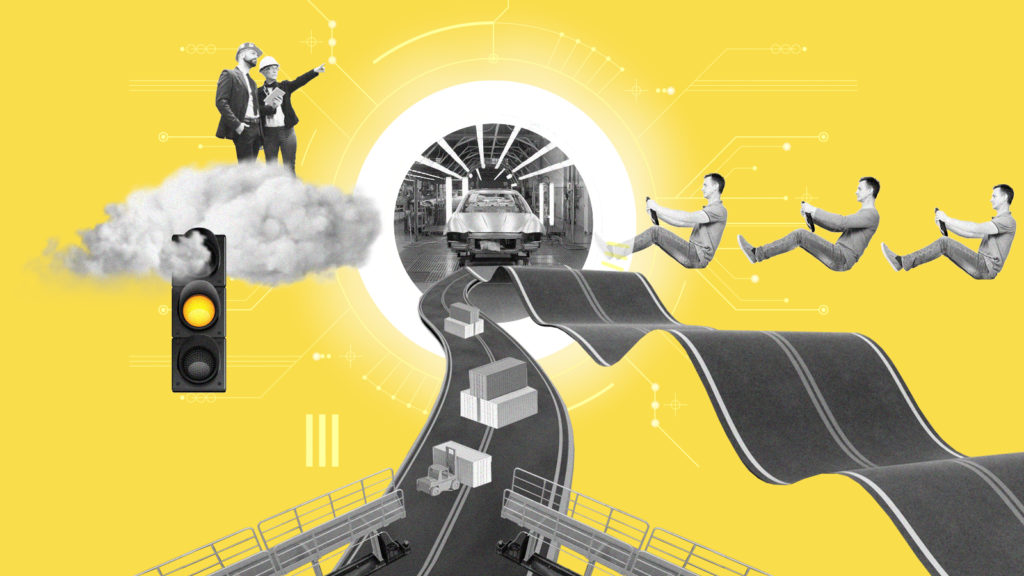The increasing trend towards batch size 1 is permanently changing automotive production. The ever-increasing vehicle variance is a challenge for OEMs and suppliers at various levels: From production planning to supplier management to quality inspection – standard was yesterday.
Whereas in the past it was possible to produce in large quantities with the corresponding stockholding, this is no longer possible. Zero stockholding and delivery on demand are part of the new normality.
OEMs and suppliers grow closer together
Increasing vehicle variance inevitably affects the complexity of the supply chain and leads to a correspondingly higher need for communication between OEMs and suppliers. In the best case, this communication should take place in near real time and not in silence. Here, too, transparency and speed are everything.
Compared to other industries, the level of automation at OEMs is already very high. EDI has long been the standard in communication between OEMs and suppliers. In practice, this is often where the first bottleneck emerges: while OEMs expect the desired call-offs to be delivered on time and in the right quantity and expect an order confirmation immediately, suppliers often need too much time to check whether the necessary capacities and stocks are available for the order. If the realisation comes too late that the corresponding capacities are not available, it is usually only possible to react with cost-intensive extra shifts.
However, in order to be able to quickly make reliable statements on the part of the supplier about which delivery is possible and when, the suppliers need corresponding software solutions, as the classic ERP systems cannot do justice to this task. This problem is exacerbated by the bullwhip effect with tier 2 and tier 3 suppliers.
Documentation, documentation, documentation
What sounds simple at first can quickly become a pitfall given the complexity of production processes in the automotive industry. Without an uninterrupted flow of communication, different drawing versions and different information versions quickly exist in different sources of the suppliers and sub-suppliers. Errors are then almost pre-programmed.
A small screw can quickly become a big problem: The first supplier receives an order from the design department to manufacture a door. The first supplier receives an order from the design department to manufacture a door and discovers that a screw has been forgotten – but only after the first parts have arrived at the second supplier. And already there are two sets of drawings. Supplier number three then realises that an element cannot be realised as intended in the design and adjusts accordingly. In the end, there are three drawing statuses and thus new sources of error.
An intelligent, integrated software solution records the data and automatically points out differences. In addition, it should be possible to retrieve data from production and to carry out an information comparison between actual and target.
Specific quality management instead of standard checks
For quality management, many different vehicle variants mean a departure from parameter lists that could be applied umpteen times. Each vehicle has its own features that have to be checked specifically. Conventional software solutions for support could be set up once with the corresponding forms, images, features and tolerance limits. However, this is no longer sufficient today – because manually adapting the test plans costs too much time, money and is too prone to errors. New software solutions can create automatic test plans, test protocols and forms so that employees do not have to make new set-ups for each vehicle variant.
Integrated digitalisation instead of silo-like structures
The more complex the structures, the more important transparency and communication become. This cannot be guaranteed with the use of different software solutions and systems. So for digitisation to be future-proof, the development must move away from silos and towards an integrated structure.
Read here how to digitalise your automotive production in a future-oriented way – because the car of the future comes from the cloud.
